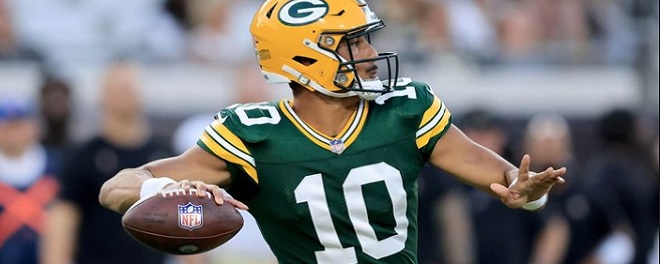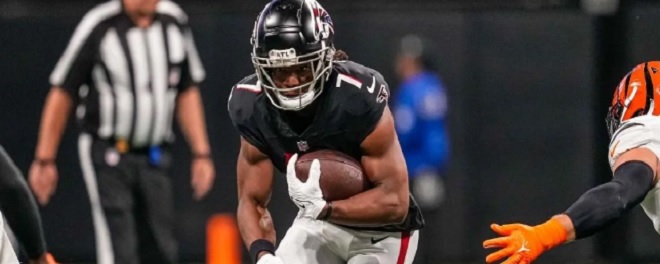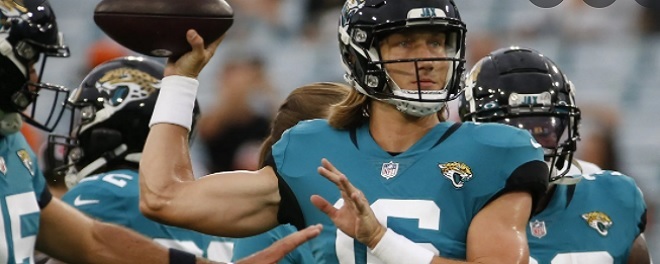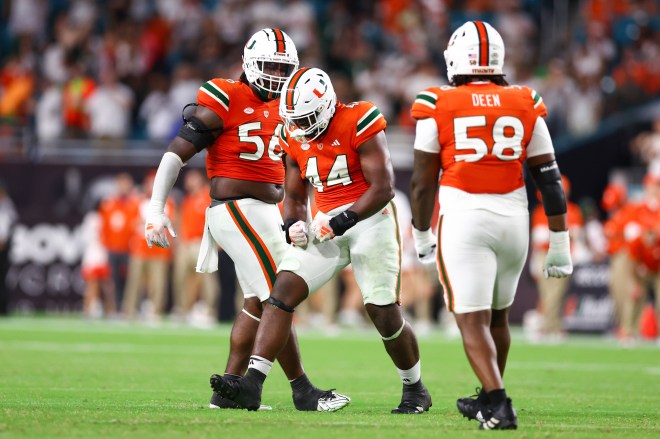Why Jimmy Clausen Should Be the No. 1 Pick
This is an article I published for USA Today’s NFL Draft magazine in very early March. If you want to see this article in print, it should be available in most bookstores. The magazine has Eric Berry on the cover, and the article can be found on Pages 2-4 and 6-7. I promised I would publish it on this site, but I didn’t want to do it close to the release date because it may have been a conflict of interest. Now a few days prior to the 2010 NFL Draft, it’s probably not a big deal.
NFL Draft devotees who watched Nebraska defensive tackle Ndamukong Suh dominate Texas in the Big 12 championship game fell in love. Sportswriters gushed for days. Comparisons were made to Reggie White. Suh was placed atop mock drafts.
Meanwhile, the 1-15 St. Louis Rams need a defensive boost. Suh and the Rams seem like a perfect match. Imagine what defensive guru and head coach Steve Spagnuolo could do with that type of talent.
Despite all that, the Rams must pass on Suh and select Notre Dame quarterback Jimmy Clausen in the 2010 NFL Draft.
Jimmy Clausen is the top quarterback in the 2010 NFL Draft
Oklahoma’s Sam Bradford is lauded for his pinpoint precision, which some analysts cite as the primary reason he will be the first signal-caller chosen. However, Clausen’s completion percentage in 2009 (68.0) was better than Bradford’s in 2008 (67.9).
Clausen has spent the past three years in a West Coast offense, allowing him to make a smooth transition to the NFL. Bradford, on the other hand, has played in the shotgun his entire collegiate career.
Clausen has the better arm strength, and aside from a minor toe injury, is healthy. Bradford, meanwhile, had two injuries to his throwing shoulder this season and endured shoulder surgery in October. Chad Pennington’s shoulder surgeries have sapped him of his arm strength. It’s unclear if the same thing will happen to Bradford, but would the Rams be willing to pay Bradford a Matthew Stafford-type contract (6 years, $72 million) without knowing if his arm strength is diminished?
Clausen is the most pro-ready junior quarterback to enter the NFL Draft in at least 15 years. His three years of experience in the West Coast offense are important, but his 7-to-1 touchdown-to-interception ratio this season was astounding. As a comparison, Peyton Manning had a 1.7-to-1 ratio in his junior year. Philip Rivers and Ben Roethlisberger maintained 2-to-1 ratios as juniors.
Furthermore, Clausen’s completion percentage of 68.0 was greater than the junior-year figures of Manning (63.9), Rivers (62.7) and Roethlisberger (64.4). And it’s not as if Clausen was tossing only short passes; his yards per attempt of 8.8 was better than the numbers posted by Manning (8.7), Rivers (8.0) and Roethlisberger (7.6).
There are two popular concerns regarding Clausen: his height (6-2) and diva personality. The former is not an issue; numerous elite quarterbacks in the NFL are similar in stature: Aaron Rodgers (6-2); Tony Romo (6-2); Brett Favre (6-2); Kurt Warner (6-2); Drew Brees (6-0). **Note, this was before Clausen measured in at 6-3 at the Combine. **
As for Clausen’s personality, he couldn’t have been a terrible presence in the locker room because he was voted captain by his teammates. Rivers also comes across as arrogant and even yelled at some Colts fans during a playoff game two years ago. Ask the Chargers if they regret obtaining him in the 2004 NFL Draft.
Clausen is a leader. After suffering a toe injury against Purdue, he re-entered the lineup in the second half and commanded Notre Dame to a come-from-behind victory. In eight battles against bowl teams in 2009, Clausen posted a 68.2 completion percentage and threw for 2,525 yards, 20 touchdowns and only two interceptions. He stepped up when it mattered most, but his anemic defense and offensive line betrayed him.
Clausen dominated his toughest opponents and shined on college football’s biggest stage � all while playing in a difficult, NFL-style scheme for Charlie Weis. If Clausen, who is ranked No. 4 on Mel Kiper’s 2010 Big Board (as of Jan. 20), isn’t talented enough to be chosen No. 1 overall, no quarterback is.
**For more on why Jimmy Clausen is the top quarterback prospect in the 2010 NFL Draft, read Jimmy Clausen vs. Sam Bradford: Tale of the Tape. Out of 21 quarterback attributes, Clausen beats Bradford, 15-11.**
Quarterbacks are more important than defensive tackles
Finding a franchise signal-caller is any NFL team’s primary mission. Since 1998, nine quarterbacks have been chosen No. 1 overall, and 15 were selected with a top-three pick.
Meanwhile, only one defensive tackle was obtained with a top-three selection in that span (Gerard Warren). In fact, the last time a defensive tackle went first overall was in 1994 (Dan Wilkinson).
There is no questioning the upside of Suh. He has the talent to be a perennial Pro Bowler. But to pay No. 1 overall money to a defensive tackle without addressing the quarterback position is fiscally irresponsible. It echoes the strategy Daniel Snyder employed last offseason when he gave Albert Haynesworth an obscene $100 million contract ($41 million guaranteed). Snyder ignored the fact that a year ago, the highest-paid defensive tackle in the league (Oakland’s Tommy Kelly) received just a $50.5 million deal.
Haynesworth was unquestionably the most talented free agent available, but Snyder’s mistake was paying a defensive tackle that much money without finding an upgrade over quarterback Jason Campbell, or at least giving Campbell some protection. The result was disastrous. The Redskins were limited to 17 points or less in 11 games and suffered through a 4-12 record.
The Rams are not the Redskins. They don’t have a longtime loyal fan base. They cannot afford to go through a fourth consecutive miserable season without having a glimmer of hope in a young quarterback. Their final three home games last year failed to sell out, and in this economy, there will be more blackouts if things don’t improve.
The Redskins-Haynesworth debacle was not an isolated incident. In 1990, the Seattle Seahawks spent the No. 3 overall selection on defensive tackle Cortez Kennedy. Kennedy played for 11 years, was named All-Pro four times, and was a finalist for the Pro Football Hall of Fame in 2009. Suh should be content if his individual career mirrors Kennedy’s.
In 1992, Kennedy accumulated 14 sacks and was named NFL Defensive Player of the Year by the Associated Press. Ironically, the Seahawks maintained a laughable 2-14 record that season. Kennedy played in only one postseason game in his entire career (a loss to the Miami Dolphins). Seattle’s record with Kennedy on the roster was a miserable 76-100.
The Seahawks didn’t become a perennial playoff team until they acquired a franchise quarterback in Matt Hasselbeck. As dominant as Kennedy was, he couldn’t lead Seattle to anything better than a 9-7 record. Defensive tackles just don’t have that type of control. Quarterbacks do, and that’s why 15 have been drafted in the top three since 1998.
There is no other way to obtain a franchise quarterback
Unfortunately for the Rams, drafting Ndamukong Suh and finding a franchise quarterback elsewhere is not a realistic option.
The top unrestricted free agent quarterback is Chad Pennington, who turns 34 in June. It’s doubtful the Rams would want to invest in an injury-prone signal-caller. Marc Bulger has missed 20 games in the past five seasons. Why would St. Louis want a Bulger replica?
There is some speculation that the Rams will trade for Michael Vick. By doing this, St. Louis will put itself in danger of further alienating its dwindling fan base. And besides, Vick hasn’t started an NFL game since 2006. That year, he led the Falcons to a pedestrian 7-9 record with a completion percentage of 52.6. He is not the answer.
It’s possible that the Rams will trade for Donovan McNabb if they are offered a lucrative deal, but the Eagles may demand too much in return. Sacrificing several draft choices for a 33-year-old quarterback in the final years of his prime would be unwise.
St. Louis may opt to obtain Suh and a quarterback in the second or third round. From a historical perspective, this would also be a crucial error.
Since 2000, 24 quarterbacks have been chosen in Rounds 2 or 3. It’s too early to tell if Kevin Kolb or Chad Henne will become successful, but of the other 22 signal-callers, only Drew Brees and Matt Schaub have panned out. Excluding Brees, only three second- or third-round quarterbacks in that span have started a playoff game, and they were Quincy Carter, Chris Simms and Tarvaris Jackson. Carter is out of the league, while Simms and Jackson are currently backups.
Finding a franchise quarterback in Rounds 2 or 3 has been a 2-in-22 proposition over the previous decade. Opting for a first-round signal-caller, on the other hand, is a much higher-percentage proposition.
There have been busts like JaMarcus Russell and David Carr, but seven of the 12 quarterbacks chosen in the top five overall since 2000 have started at least one playoff game. Four have advanced to at least one conference championship.
Spending the No. 1 choice on Clausen undoubtedly gives the Rams a better chance of landing a franchise quarterback. But given those first-round quarterback busts, isn’t drafting a defensive tackle much safer? Conventional wisdom says so, but that is a fallacy.
Eleven defensive tackles were drafted in the top 10 between 2000 and 2008. Five are busts, as they’ve spent five years or less with their initial team. Two others (Amobi Okoye and Glenn Dorsey) may join that pantheon soon. This leaves four successful top 10 defensive tackles (Richard Seymour, John Henderson, Kevin Williams and Sedrick Ellis) since 2000.
Granted, Suh is arguably a superior prospect than Williams or Henderson, but the point is that top-rated defensive tackles bust just as much as quarterbacks.
**Go here for proof that defensive tackles bust more than quarterbacks.**
Waiting around for a quarterback could backfire
One popular solution would have the Rams draft Suh this April and then Jake Locker, Andrew Luck or Ryan Mallett next year.
In theory this is a good idea. The Rams could have their cake and eat it too. But what if Suh elevates the defense enough that St. Louis wins five or six games in 2010? With a 5-11 or 6-10 record, the Rams, like the Bills, Browns and Seahawks this year, might not be in a position to draft a franchise quarterback. **Note: This has obviously changed in the wake of the Donovan McNabb trade. **
Much like the Seattle teams of the 90s, the Rams would then be stuck with a perennial Pro Bowl defensive tackle, but no franchise quarterback to speak of. As we’ve seen with the Seahawks, that only leads to years of mediocrity.
Steve Spagnuolo needs “his guy”
There were 10 new NFL front-office regimes since 2008. The Ravens, Falcons, Lions, Jets and Buccaneers all selected quarterbacks in the first round. The Broncos and Chiefs traded for new signal-callers. The Dolphins signed Pennington and drafted Henne in the second round.
The Browns and Rams were the only teams that didn’t bring in a new starting quarterback. Cleveland had an unknown commodity in Brady Quinn. St. Louis flirted with Mark Sanchez but ultimately couldn’t take him because of Marc Bulger’s enormous contract.
The Rams now have the luxury of cutting the injury-prone Bulger and finding a new franchise guy. And just because Spagnuolo is a former defensive coordinator doesn’t mean that he’ll select Suh over Clausen. Marvin Lewis, Rex Ryan, Mike Smith, Jim Schwartz, Jack Del Rio and Raheem Morris are all defensive coaches who chose a quarterback with their initial first-round pick.
**Read more about the fact that New Regimes Mean New Quarterbacks.**
Jimmy Clausen, the face of the franchise
Following two years of trying, Rams majority owners Chip Rosebloom and Lucia Rodriguez finally found a taker for their franchise. In mid-February, auto parts manufacturer Shahid Khan agreed to buy a 60-percent stake in the franchise and said he would keep the Rams in St. Louis. The sale awaits league approval.
With a new owner, the Rams need a new face of the franchise. Outside of Steven Jackson, the Rams lack a recognizable face on their roster. Clausen, a franchise quarterback and a Notre Dame alumnus, would be a valuable commodity. Quarterbacks sell jerseys and tickets.
The Rams have six total victories (fewest in the NFL) in the previous three seasons, and if they pass on Clausen, it will only be one of many dubious errors in judgment they’ve committed recently.
Acknowledgments: Matt McGuire deserves credit for digging up those Jimmy Clausen junior-year stats. E-mailer Mike Shaw brought the Cortez Kennedy comparison to my attention. Mark Sanchez (forum member; not the NFL quarterback) reminded me that New Regimes Mean New Quarterbacks. And forum member Maine Man brought up the fact that a quarterback made even more sense for the Rams because they were being sold at the time.
NFL Power Rankings - Dec. 23
NFL Picks - Dec. 22
2026 NFL Mock Draft - Dec. 17
Fantasy Football Rankings - Sept. 1




